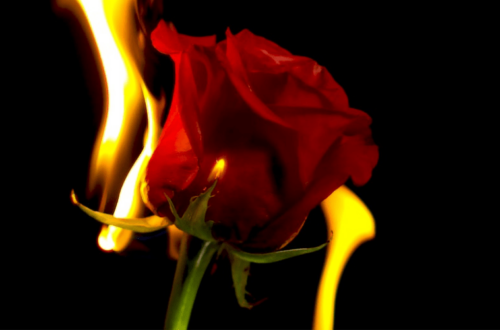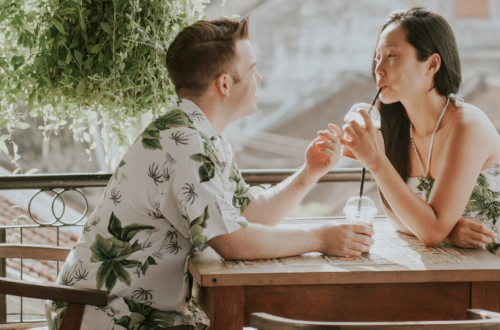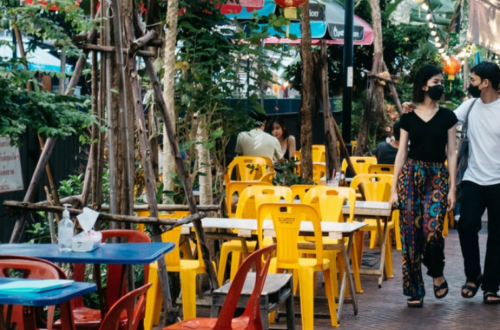Important Thai Wedding Traditions You Should Know
Your wedding day is all about you and your significant other. And, what better way to show your identity than incorporating your heritage, in this case, adding Thai wedding traditions!
Thai wedding traditions are beautiful, timeless, and unique. It adheres to some classic customs that just make you appreciate your roots.
Eight Thai Wedding Traditions to Know Of
Contemporary weddings are fun, classy, fantasy-like, and sometimes whimsical. And, while all that will make for the perfect and unforgettable wedding, incorporating your traditions into it would just lock in everything. It would make everything perfect.
If you’re here to get in touch with your roots by adding traditional Thai practices to your wedding, the list we collected below should be your best friend!
1. Wedding proposal or Thong mun
Thai wedding proposals are a family affair then and now. Traditionally, a betrothed couple would gather all their families to introduce everyone to each other. During this time, families would bond and talk about the upcoming marriage. There might even be formal conversations or programs, depending on the specific customs they practice.
A groom customarily doesn’t only have to win his bride-to-be’s approval but also that of his future in-laws. A bride, at the same time, has to earn her future in-laws’ favor. Nonetheless, among the topics discussed by family elders during an engagement ceremony are sin sod (Thai “dowry”) and the wedding date.
Paying a “dowry” is commonplace in Thailand, which may surprise you if you’re a Westerner who plans to wed a Thai woman. In Thai tradition, the groom-to-be should present the bride’s family with the Khong Man and sin sod.
In Thai culture, an engagement becomes official when the groom gives his bride-to-be a present of 24-carat gold jewelry known as Khong Man. Giving your future wife a Khong Man gift is expected, but proposing an engagement ring is entirely optional in Thailand.
As for the wedding dates, families would let someone decide among themselves or hire a monk or astrologist to help them choose a date. Ideally, the wedding date should be auspicious and help the couple secure a successful marriage. When picking the wedding date, experts would also base their decision on the couple’s birthdates, time of birth, and zodiac signs.
2. Merit-Making
Despite the very progressive society we now live in, Buddhists in the country still adhere to Thai wedding traditions such as merit-making.
In Buddhism, it’s essential to make merit. It’s a positive and encompassing energy that grows from good thoughts or actions. Thai wedding traditions such as merit-making are crucial to many Buddhists as they affect a person’s life after reincarnation. They also bring about favorable outcomes and aid in developing someone’s spiritual growth.
Prior to the wedding, couples typically invite monks to do the ritual. Usually, a betrothed pair can accomplish this essential step by releasing a caged bird or a fish back into the ocean.
It is a widely held belief among Thai Buddhists that making a merit donation to any wat (temple) will also guarantee a lifetime of love for the couple. Grooms donating a generous amount of money on behalf of their future in-laws would also gain praise from the latter.
3. A groom’s procession or Kan maak
Before the big day, it was customary for the groom and his family to march from his house to the bride’s home. Today, the procession usually starts a few blocks away from the bride’s home. The entourage dances to the bride’s home carrying gifts as musicians playing long traditional drums accompany them.
This ceremony is called the Kan Maak (ขันหมาก /kăn-màak/), meaning “bowl of betel nuts.”
The items in the Kan Maak tray may differ depending on the culture and location. But, these things stand for important marital characteristics, including longevity, fertility, prosperity, and good health. Besides having four or eight pieces of young betel nuts as gifts, the Kan Maak tray also contains the following:
- Flowers having lovely meanings or translations like Crown flower (love) or Marigold (prosperity).
- Golden bag (ถุงทอง tŭng torng) which should contain sesame nuts, popped rice, and mung beans
- Silver bag (ถุงเงิน tŭng ngern) with money, generally coins, inside
4. Doors Ceremony or Sanuk
After the Kan Maak procession and upon reaching the bride’s residence, the groom would have to go through the Doors Ceremony. He will be greeted by the bride’s family, who have built gates, chains, or symbolic doors as a way to welcome him.
To pass, the groom must effectively remove the “blockage.” He can do that by physically removing the barrier or by paying a fee to do so. Symbolically, these help prove his financial stability and physical suitability for marriage.
This ceremony is a fun, upbeat affair that features jokes and laughter from both sides of the family. Families and friends of the couple would also play some games, such as paying at each gate to gain the bride’s honor. ‘Sanuk‘ is the name of this door game ceremony.
The bride’s family must give the dowry once the groom has overcome all challenges.
5. “Thai bride price” or Sin sod
Part of the long list of Thai wedding traditions is the Sin sod. It is a longstanding custom where a groom traditionally presents a financial gift to the bride’s family on the wedding day.
Sin sod is frequently mistaken for “dowry,” although it actually refers to the tradition of a bride’s family paying the groom’s family. So, although “Thai Dowry” is frequently used to describe sin sod, the most appropriate translation for it is “Thai Bride Price.”
Additionally, some people find it distasteful to “buy” a bride. But, despite having a negative connotation, the custom evolved to ensure that the groom was financially stable. Nevertheless, newlywed couples tend to receive a portion of these funds back after the wedding. This is the bride’s family’s wedding gift to the newlyweds as they begin their new life together.
6. Thread (Sai monkhon) and Water-pouring (Rod nam sang) ceremonies
Customarily, Thai wedding traditions must include the water pouring as it is at this point that the pair legally becomes husband and wife. Before, this was all that was necessary to ratify the marriage. However, these days, couples will also need to collect a marriage certificate to validate their union.
Prior to the water pouring ceremony, a pair must first sit at the water-pouring tables (dtang rot naam), with the bride on the groom’s left. A ceremonial headdress (mong kol) will then be placed on each of their heads in the shape of a circle to symbolize the couple’s union. A Buddhist monk had earlier in the wedding blessed these generally cotton-made headdresses.
Furthermore, the older family members or special guests anoint the couple’s foreheads with three dots of white powder, forming a pyramid. Like any Thai tradition, this ritual should bring luck to the newlyweds.
As soon as a couple puts both hands in the water, this is a clear sign that they’re ready for the water pouring ceremony. In turn, each of the senior members or elderly guests will take the ceremonial water pouring conch shell (sang rot naam) over the couple’s heads.
Also read: 7 Reasons Why You Should Date Thai Singles
7. Giving gifts to the elderly
The mainstay of Thai wedding customs is respecting elders. Recognizing the bride’s parents is customary before the groom’s parents. Nevertheless, couples would present them with traditional gifts, including some senior relatives.
8. Setting up the newlyweds’ bed
In general, wedding banquets during receptions are similar to other wedding receptions elsewhere. It involves a lot of merriment, honoring, and getting to know the relatives and friends of the newlyweds.
After the wedding reception, regular couples will go to bed or fly to a destination for their honeymoon. But this part of the Thai wedding traditions is anything but typical.
When the wedding festivities are over, a pair will retire to bed where an elderly couple would greet them. This pair is typically a couple’s grandparents. They must be married themselves as their successful marriage will be regarded as the benchmark, the standard, if you will.
Nonetheless, the elderly couple will say a few blessings. They will then leave the newlyweds with tokens on their bed—like money and rice—symbolizing fertility and prosperity. The newlyweds must leave these items in their bed and sleep with the items for luck to work.
Congratulations and best wishes!
Are you a Thai looking for ways to express your pride in your roots by incorporating Thai wedding traditions into your own wedding? It must be your lucky day having stumbled upon our blog page. You’re welcome! May you enjoy your big day and have a fruitful marriage.







